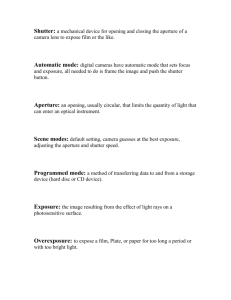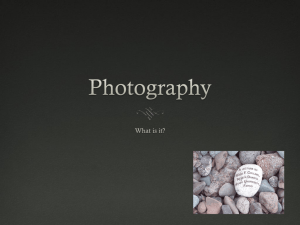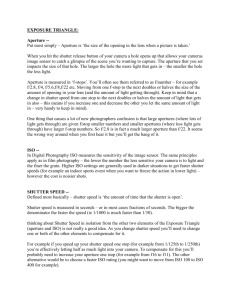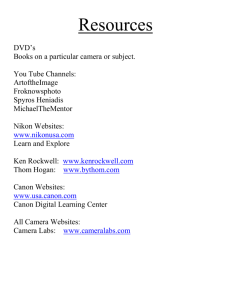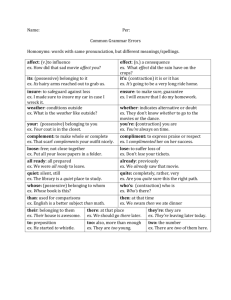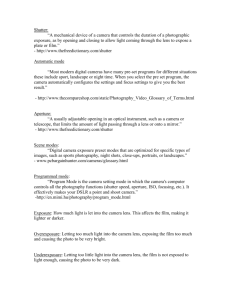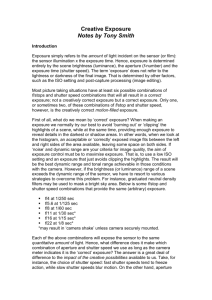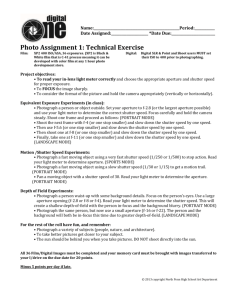Tim A Handout -- Basic Photography Terminology
advertisement
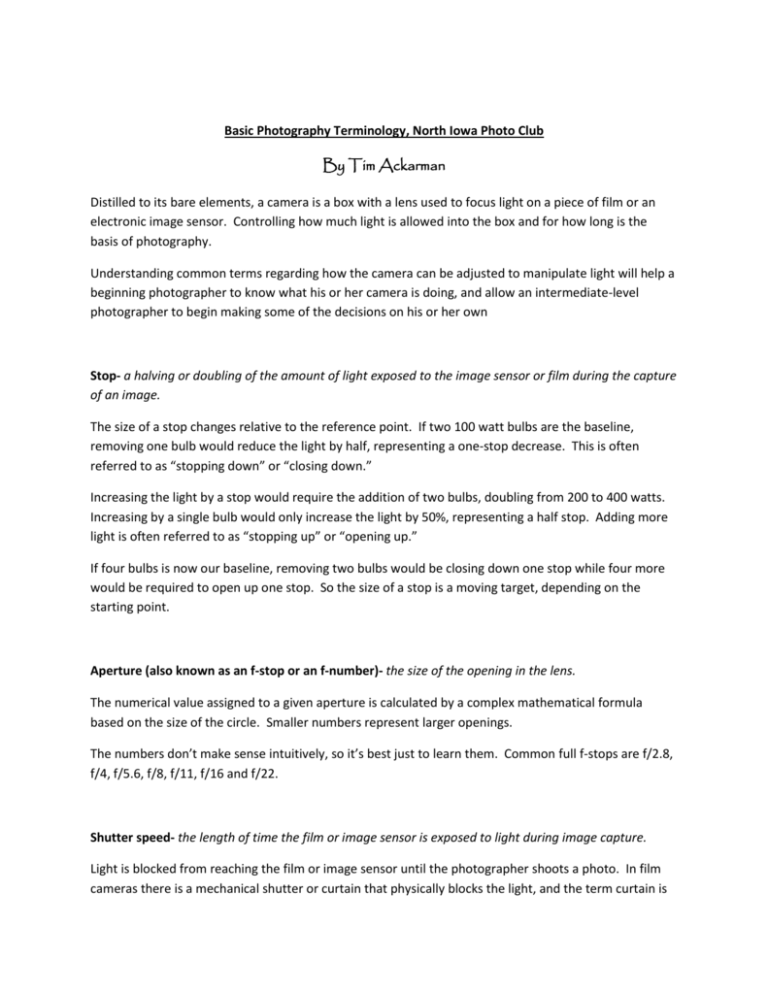
Basic Photography Terminology, North Iowa Photo Club By Tim Ackarman Distilled to its bare elements, a camera is a box with a lens used to focus light on a piece of film or an electronic image sensor. Controlling how much light is allowed into the box and for how long is the basis of photography. Understanding common terms regarding how the camera can be adjusted to manipulate light will help a beginning photographer to know what his or her camera is doing, and allow an intermediate-level photographer to begin making some of the decisions on his or her own Stop- a halving or doubling of the amount of light exposed to the image sensor or film during the capture of an image. The size of a stop changes relative to the reference point. If two 100 watt bulbs are the baseline, removing one bulb would reduce the light by half, representing a one-stop decrease. This is often referred to as “stopping down” or “closing down.” Increasing the light by a stop would require the addition of two bulbs, doubling from 200 to 400 watts. Increasing by a single bulb would only increase the light by 50%, representing a half stop. Adding more light is often referred to as “stopping up” or “opening up.” If four bulbs is now our baseline, removing two bulbs would be closing down one stop while four more would be required to open up one stop. So the size of a stop is a moving target, depending on the starting point. Aperture (also known as an f-stop or an f-number)- the size of the opening in the lens. The numerical value assigned to a given aperture is calculated by a complex mathematical formula based on the size of the circle. Smaller numbers represent larger openings. The numbers don’t make sense intuitively, so it’s best just to learn them. Common full f-stops are f/2.8, f/4, f/5.6, f/8, f/11, f/16 and f/22. Shutter speed- the length of time the film or image sensor is exposed to light during image capture. Light is blocked from reaching the film or image sensor until the photographer shoots a photo. In film cameras there is a mechanical shutter or curtain that physically blocks the light, and the term curtain is still sometimes used when describing more advanced photography techniques. In digital cameras the image sensor is usually just turned on and off for the prescribed amount of time. This allows for faster shutter speeds, the significance of which we’ll discuss later. Shutter speeds are normally expressed in fractions of a second, occasionally in seconds or even minutes for long exposures. The fractions for common full stops basically follow a logical pattern, with slight jumping around to keep the numbers even: 1/2, 1/4, 1/8, 1/15, 1/30, 1/60, 1/125, 1/250, 1/500… ISO (formerly known as ASA) - the sensitivity of the film or image sensor to light. Film of various “speeds” react differently when exposed to the same amount of light, giving photographers more options in terms of shutter speed and aperture. The ISO on modern digital cameras is adjustable. Common whole ISO values are 25, 50, 100, 200, 400… So in order to obtain a properly exposed image the photographer (or the camera in an automated mode) can change the amount of light striking the film or image sensor by adjusting the size of the opening (aperture) or changing how long the aperture remains open (shutter speed). The results obtained with a given amount of light can also be adjusted by changing the sensitivity of the film or image sensor (ISO). Most modern cameras allow adjustments of these three parameters in either half-stop or third-stop increments. Many allow the photographer to select whether he or she wants to use half or third-stops. There are limitations to each of these adjustments as well as secondary effects that result from making them. Understanding these secondary effects allows the creative photographer to overcome them where the result is negative and take advantage of them where the result is desirable.
